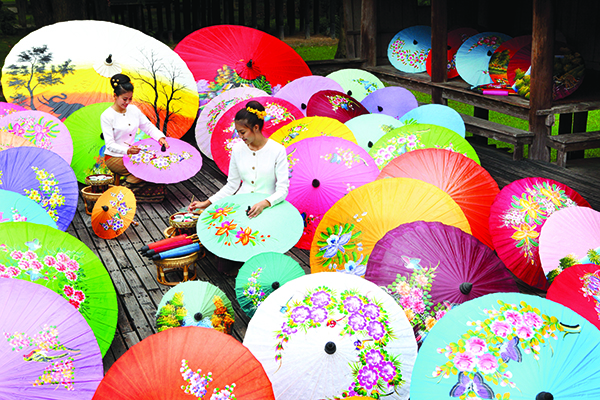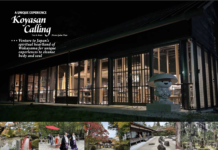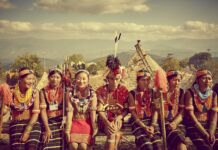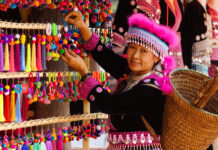Thailand’s northern city of Thailand was once the center of knowledge, architecture and commerce. Traders and travellers alike brought with them handicrafts like silverware, parasols and woodcarvings, all of which are still made today.
Text and Photos Tourism Authority of Thailand
Silverware-Making

Wualai’s beautiful silverware originates from the time King Mangrai established Chiang Mai in the 13th century as the capital of the Lanna Kingdom. After negotiating with the city of Bagan to bring Burmese craftsmen to Chiang Mai to teach local townspeople the artistry of silver-crafting, the city’s local silverware industry was created and the skills have since been carried down through the generations.
Almost every house had a small factory, and people bought silver from Chinese merchants in Chiang Mai’s downtown to forge silverware for daily use and for sale: bowls, paddle trays, and the like. Men moulded and forged the silver, while women carved and sold the finished pieces.
Related: Homemade Burmese Booze for Sale
As trade with different areas progressed, the raw material for silverware pieces grew varied – from Burmese rupees to coins from China’s autonomous region of Xishuangbanna Dai. Today, silver accessories and decorations are also popular, featuring prominently on the roofs of temples like Wat Sri Suphan – also known as the Silver Temple.
Experience Silverware-making at the Wualai Walking Street in Wualai village
Umbrella-Making

In Thailand, umbrellas are an important symbol of royalty. Thai monarchs sit on thrones under nine-tiered umbrellas, with the tiers representing the eight points of the compass and the Buddhist concept of protection from suffering and harm.
Thai umbrellas were said to have originated from a monk called Phra Intha, who travelled to Myanmar and discovered people making oiled umbrellas using mulberry bark, which kept people dry as well as cool. Impressed, the monk took samples back to his home of Bo Sang village and taught the villagers how to make them. The people then added artistic flourishes to the umbrellas – painting typical Thai symbols like elephants and rice fields –
and the industry grew as umbrella-making provided people with a source of income during the rainy season.
Related: Bangkok’s Chinese Heritage May Soon be Bulldozed
Bo Sang remains the centre of Chiang Mai’s handmade umbrella production. Set up in 1941 by the village craftsmen, the Bo Sang Umbrella Making Cooperative is dedicated to maintaining the traditions and craftsmanship of the trade. These umbrellas are so vital to the local economy, they’re celebrated in a three-day umbrella festival every January: the Bo Sang Umbrella and Sankampaeng Handicraft Festival, which sees the streets strung with the colourful sa umbrellas.
Experience umbrella making at Bo Sang village along San Kamphaeng Road
Woodcarving

Thai woodcarving, called Kruang Mai Cham Lak, is considered one of the country’s traditional art forms. Done in an ancient artistic style, carvings are divided into three types: bas-relief, deep-relief and round-relief. Bas-relief has flat carvings only on the front of the wood, with few curves. Deep-relief carvings have three dimensions: depth, width, and height. Examples of round-relief carvings include Buddha sculptures, which have been carved on every side. Since wood decays easily compared to cement or brick, Thai wood art is very rare, and a work can take years to complete, requiring high levels of patience and artistic skill by the carver. Today, skilled craftsmen are rarely found, and few are willing to become disciples.
Related:A Dyeing Art
Baan Tawai village is a renowned source of woodcarving products in Chiang Mai. Craftsmen with over 40 years of experience meticulously hand-carve these wooden sculptures; the village has exported so many that it has been named “the woodcarving village”. To showcase the woodcarvings and support this semi-rural area, Baan Tawai was named one of the OTOP Tourism Villages of Thailand featuring local crafts.
Experience woodcarving at Baan Tawai village, 90 Moo 2, Baan Tawai
For more stories and photographs from this issue, see Asian Geographic Issue 130, 2018











